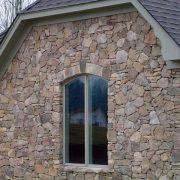Making Your Masonry Fireplace More Efficient
A masonry fireplace creates a warm and welcoming atmosphere anywhere. However, fireplaces are a source of significant heat loss, even when in use. Although the room will feel the heat being given off, the burning process pulls hot air out of the house. There are many ways to improve the efficiency of a fireplace, reduce heat loss from the house and use the existing masonry fireplace as the most effective source of heat.
Instructions
- Install a fire back, which is a thick sheet metal, such as cast iron, to help control the heat and radiate it back into the room. The fire back is placed in the back of the masonry chimney and fixed with masonry screws.
- Place a rack with a fan on the floor of the chimney fan. The fan will push the cool ambient air, heat it in the rack and blow warm air into the room. Put the fan in place and plug it into an outlet.
- Insert an inflatable pillow in the fireplace at the base of it when not in use. This prevents the heated air from another source, such as a furnace, from going to the fireplace. Be sure to remove the pillow from the chimney before starting a fire. Press the fireplace pad in place.
- Install tight fitting fire doors to seal the circulation and not lose the air in the room from the fireplace. Use them during operation, as when not. Attach them to the fireplace opening with masonry screws.
- Place a chimney fan on top of the chimney to help the fire burn hotter. Remove the chimney cap and put the fan in place. Secure it with screws to the masonry fireplace. Replace the cap on the chimney fan to prevent water and birds from entering the chimney.
- Install a vent from the outside of the chimney’s combustion chamber to extract the cold outside air for combustion instead of air heated from the inside. Pierce through the masonry with masonry hole saw from inside the combustion chamber. Insert the vent through the opening.






